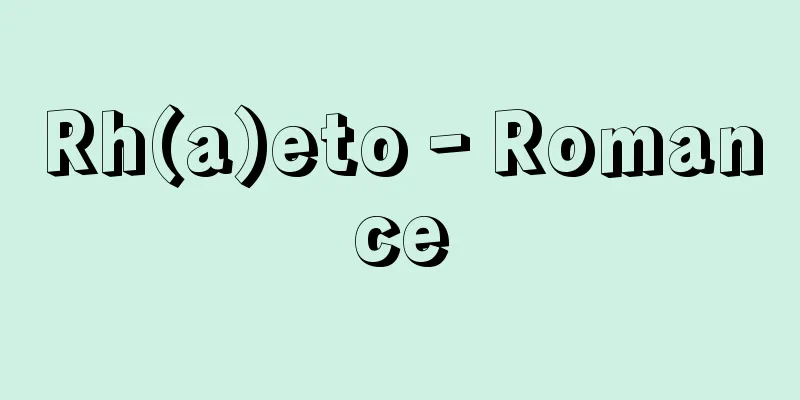Emperor Komei

|
Emperor at the end of the Edo period (reigned 1846-66). Fourth son of Emperor Ninko. Born June 14, 2nd year of Tenpo. Name was Osahito. In February 1846 (3rd year of Koka), he ascended to the throne at the age of 16, and held his enthronement ceremony in September the following year. In August 1846, as foreign relations became increasingly tense, he issued a decree to the shogunate to tighten coastal defenses. He continued to instruct the shogunate to avoid any regrets in diplomatic issues, and the shogunate could no longer ignore the wishes of the Imperial Court. When the shogunate asked for prior consent to the signing of the Treaty of Amity and Commerce between the United States and Japan in 1858 (5th year of Ansei), he refused, criticizing the decision to sign the treaty made by Ii Naosuke as "arbitrary." He expressed his intention to abdicate, but was influenced by hard-line anti-foreigner nobles and issued a secret imperial decree to the Mito domain in August, calling for reforms to the shogunate. After Ii's assassination in 60 (Man'en 1), the shogunate attempted to regain real power by compromising with the Imperial Court, and the Emperor, judging that national unity through the union of the Imperial Court and the Shogunate was urgently needed to maintain the anti-foreigner movement, approved the marriage of his younger sister, Princess Kazunomiya, to Edo. In 1862 (Bunkyu 2), he requested that Shogun Iemochi come to Kyoto, ordered reforms to the shogunate government through the appointment of Hitotsubashi Yoshinobu and Matsudaira Yoshinaga, and further urged the shogunate to issue a declaration of expulsion of foreigners, and in the following year, 1863, he had the shogunate petition "to carry out expulsion of foreigners," thus strongly leading the shogunate from its long-standing position of expulsion of foreigners. However, at the time of the "Coup of August 18, Bunkyu 3" (1863), he parted ways with the pro-expulsion court nobles, and expelled Sanjo Sanetomi and seven other nobles and the Choshu clan soldiers from Kyoto. He aimed to unite the Imperial Court and the Shogunate, centering on powerful feudal lords such as Hitotsubashi Yoshinobu, Matsudaira Yoshinaga, and Yamauchi Yodo, and was critical of the restoration of Imperial rule and the overthrow of the Shogunate proposed by some court nobles such as Iwakura Tomomi. In July 1666 (Keio 2), when Shogun Iemochi died during the Second Choshu Expedition, the Emperor ordered the Shogunate to halt the expedition, and the collapse of the Shogunate's control became definitive. However, he suddenly died on December 25th, just after the inauguration of the 15th Shogun, Yoshinobu. At that time, when strong Sonno Joi court nobles, especially Iwakura Tomomi, were aiming to restore Kyoto and the movement to overthrow the Shogunate by force by Satsuma and Choshu was becoming concrete, the most likely theory was that he was poisoned as part of a conspiracy. He died at the age of 36. His grave is in the Nochi no Tsukinowa Higashiyama Mausoleum at Sennō-ji Temple in Higashiyama, Kyoto. [Hachiro Kawachi] "The Chronicles of Emperor Komei, compiled by the Imperial Household Ministry, 5 volumes with accompanying illustrations (1967-71, Yoshikawa Kobunkan)" [References] | | |Source: Shogakukan Encyclopedia Nipponica About Encyclopedia Nipponica Information | Legend |
|
江戸末期の天皇(在位1846~66)。仁孝(にんこう)天皇第4皇子。天保(てんぽう)2年6月14日生まれ。名は統仁(おさひと)。1846年(弘化3)2月、16歳で践祚(せんそ)、翌年9月即位式をあげる。46年8月、対外関係が急迫の度を強めたため、幕府に対して海防を厳重にするよう沙汰書(さたしょ)を出した。その後も幕府に外交問題で遺憾(いかん)のないようにとの指示を与え、幕府も朝廷の意向を無視できなくなった。58年(安政5)日米修好通商条約の締結にあたって、幕府が事前の了解を求めた際にこれを拒否、井伊直弼(いいなおすけ)の決断による調印を「専断」と非難した。退位の意向も示したが、攘夷(じょうい)強硬派の公卿(くぎょう)に動かされ、8月水戸藩に幕府改革を求める密勅を発した。60年(万延1)井伊暗殺後、幕府は朝廷との妥協によって実権を回復しようとし、天皇も、攘夷の維持のためには公武の合体による国内一致が急務であると判断、妹和宮(かずのみや)の江戸降嫁(こうか)を認めた。62年(文久2)には、将軍家茂(いえもち)の上洛(じょうらく)を求め、一橋慶喜(ひとつばしよしのぶ)、松平慶永(よしなが)の登用による幕政改革を指示、さらに攘夷の布告発布を迫り、翌63年「攘夷断行」を幕府から上奏させるなど、かねてからの攘夷の立場で幕府を強く指導した。しかし、「文久(ぶんきゅう)三年八月十八日の政変」(1863)にあたっては、攘夷派公卿とたもとを分かち、三条実美(さんじょうさねとみ)ら七卿と長州藩兵を京都から追放した。一橋慶喜、松平慶永、山内容堂(ようどう)ら雄藩藩主を中心とする公武合体を目ざし、岩倉具視(ともみ)ら一部公卿の王政復古倒幕論には批判的であった。66年(慶応2)7月、第二次長州征伐中に将軍家茂が死去すると、天皇は征長の停止を幕府に指示し、幕府の統制力の崩壊は決定的となったが、第15代将軍慶喜の就任直後の12月25日急死した。強硬な尊攘派公卿、とくに岩倉具視らが京都回復をねらい、薩長(さっちょう)による武力倒幕の動きが具体化していたときだけに、陰謀による毒殺との説が有力視された。享年36歳。墓所は京都東山(ひがしやま)泉涌寺(せんにゅうじ)の後月輪(のちのつきのわ)東山陵。 [河内八郎] 『宮内省編纂『孝明天皇紀』全5冊・附図(1967~71・吉川弘文館)』 [参照項目] | | |出典 小学館 日本大百科全書(ニッポニカ)日本大百科全書(ニッポニカ)について 情報 | 凡例 |
Recommend
Evgeniy Bronislavovich Pashukanis
A leading Soviet Marxist jurist from the 1920s to...
West Indian cedar
…The Chinese name for Cedrela is either Camellia ...
National Personnel Authority - JINJIIN
This is a central personnel administration agency...
Kūchek Khan
?-1921 A leader of the Iranian nationalist movemen...
mansus
...The basis of this was the improvement of the s...
ureido
…(1) Urea (H 2 N) 2 CO is a monovalent group obta...
Morning Calm - Asanagi (English spelling) morning calm
This refers to the calm that occurs in coastal are...
Smoke bamboo - Enchiku
...It is a fairly dry tobacco, so long tobacco is...
Khalkha - Haruha (English spelling)
The name of a Mongolian tribe and place. During t...
Homo erectus (English spelling)
...In Europe, Pliopithecus , thought to be the an...
Kagamigusa - Kagamigusa
…A biennial plant of the Brassicaceae family (ill...
Fakhr al-Din II
1572‐1635 Amir (governor) of the Ma'n family, ...
Hongo [town] - Hongo
An old town in Toyota County in southern Hiroshima...
Cadastral survey
…(2) Land survey: The measurement and mapping of ...
Istria; Istros
A colony of ancient Miletus (Apoikia) on the west ...









